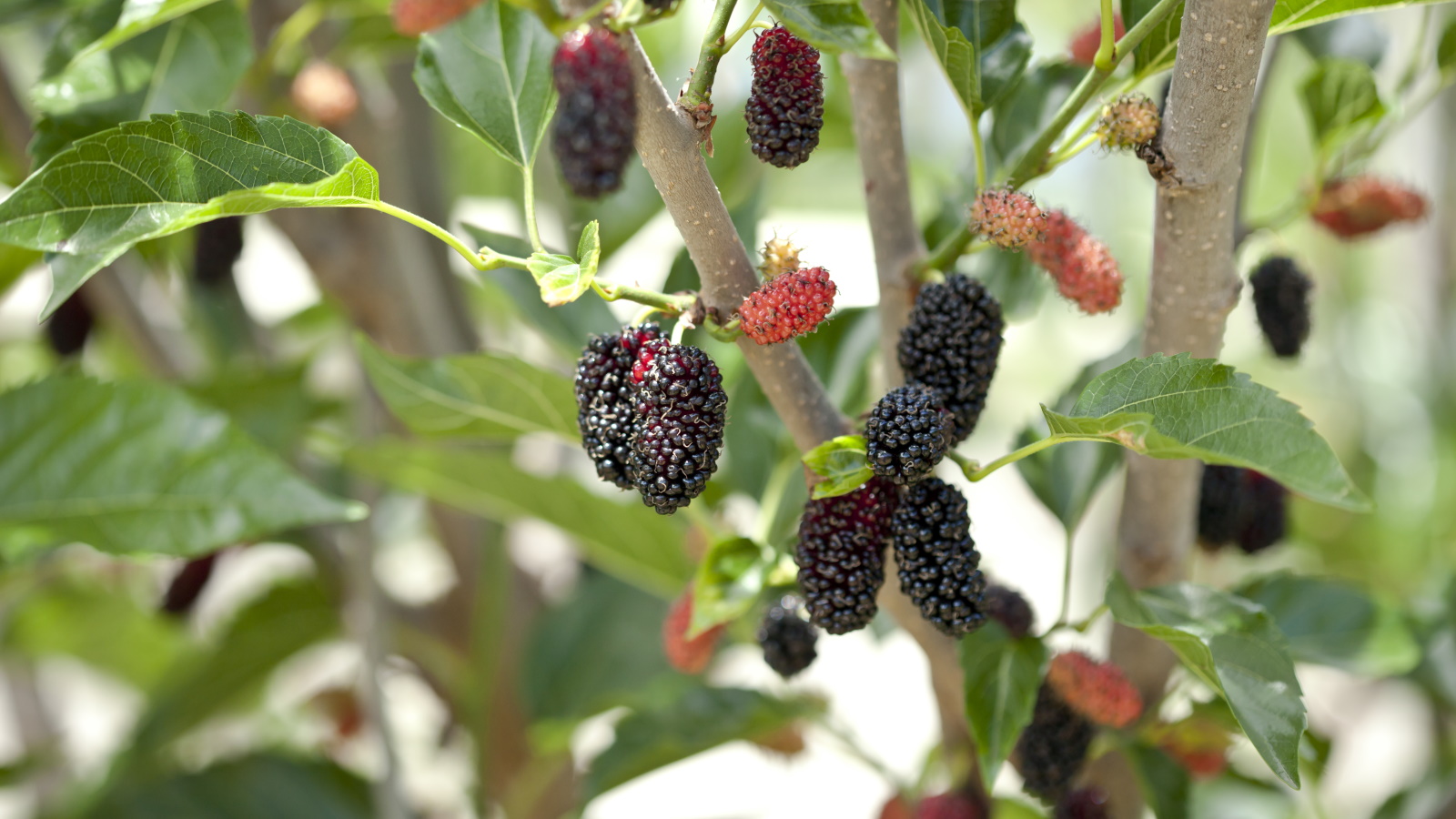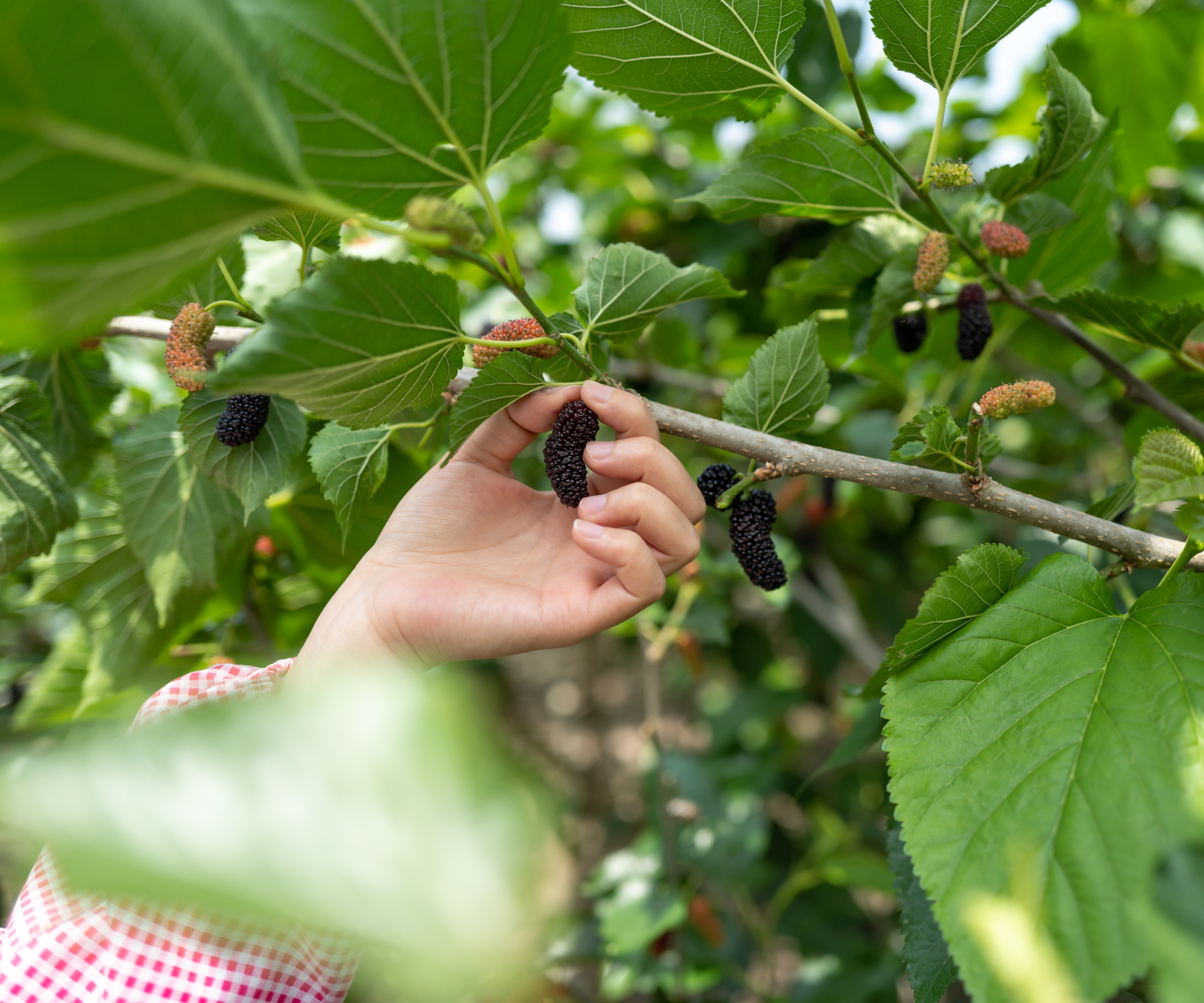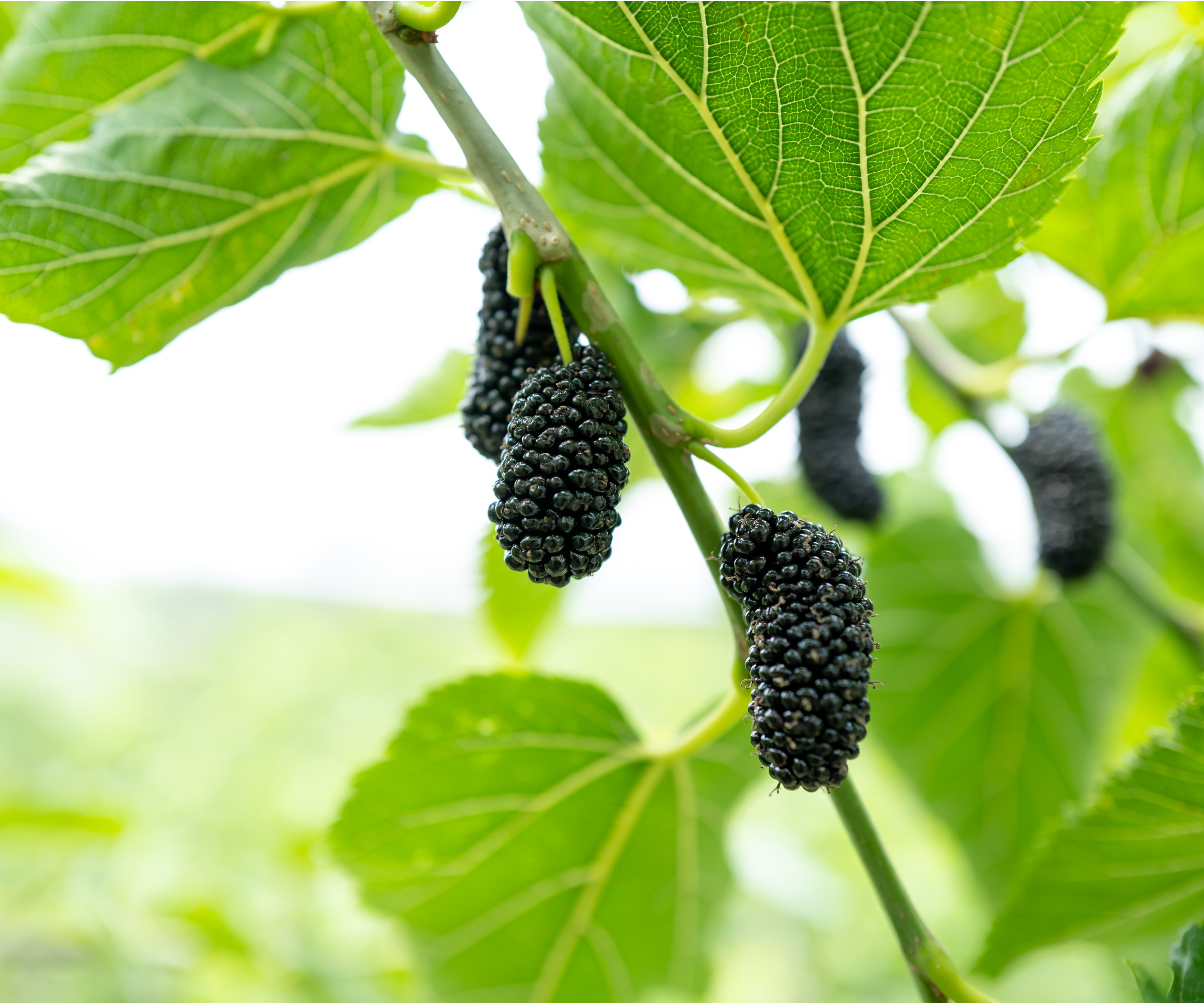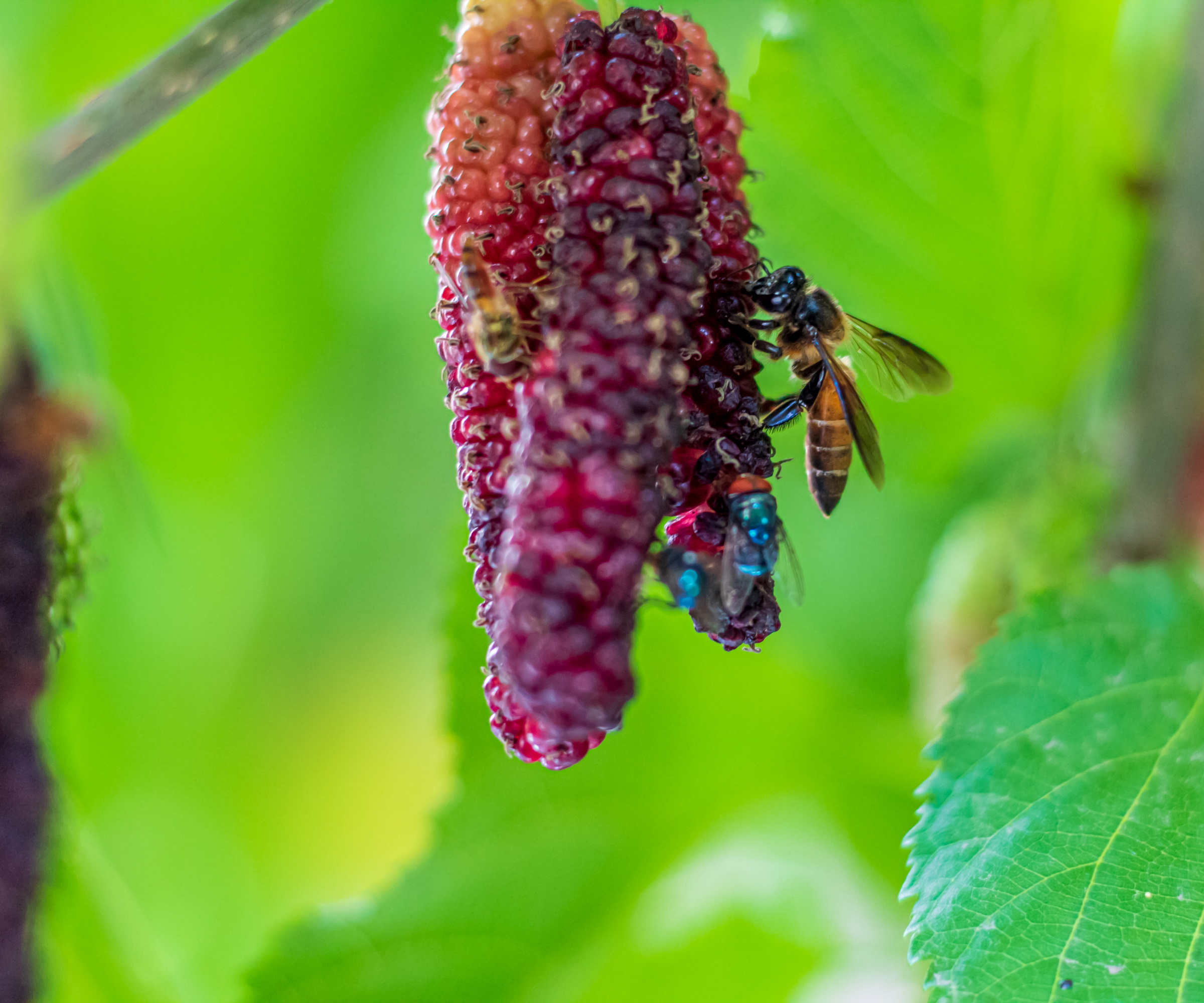How to get a mulberry tree to fruit – 3 expert tips for an abundant harvest of sweet berries
Simple adjustments can help your mulberry tree to become bountiful


Plucking a harvest of juicy crops after spending all year caring for your fruit trees is so rewarding. However, if your trees aren't proving to be productive, the opposite is true.
There are so many wonderful fruit trees to choose from, but mulberry stands out for its juicy red and black berries, as well as its ornamental value that makes smaller mulberry varieties a great choice for growing fruit trees in pots.
These trees grow across US hardiness zone four to zone eight, and require warmer conditions to be fruitful. If your mulberry tree is struggling to produce fruit, don't be disheartened - you might only need to make one of these simple adjustments.

3 ways to get a mulberry tree to fruit
Mulberry trees are usually ready to harvest during summer, but they will only start producing fruit once they've reached a level of maturity. This means they might not produce fruit until they're between six to 10 years old. However, if you have an established mulberry tree that isn't bearing any fruit, it might be due to one of these issues:
1. Your mulberry tree needs more light

Like most fruit trees, you need to ensure your mulberry tree is positioned somewhere sunny. If you haven't yet planted your mulberry tree and are making preparations to do so, make sure to plant this fruit tree in a spot where it will get plenty of exposure to direct sunlight.
'Mulberry trees need full sun exposure of at least six to eight hours a day,' says Tammy Sons, horticulturist and CEO of TN Nurseries. 'Inadequate sunlight will cause fewer flowers and poor fruit production,' she explains.
Placing your mulberry tree somewhere sunny will also help provide optimal temperatures: 'The ideal temperature range for mulberry trees to fruit is between 68-86°F,' Tammy notes.
Of course, once your mulberry tree has been planted, it's not easy to move around. If you need to improve the amount of sun exposure, try cutting back surrounding trees and pruning tree branches that are blocking light from your mulberry tree.
If you're growing a dwarf variety in a pot, you can simply move your potted mulberry tree to a sunnier spot. A south-facing garden wall would work well. You can even use this wire trellis kit from Amazon to train your mulberry as a tree to espalier.

Tammy Sons is a horticulture plant expert, garden writer, and educator. Tammy is the CEO and founder of TN Nursery, a thriving online plant nursery based in Altamont, Tennessee. She is also a prolific writer, sharing her knowledge through articles on various gardening topics, including plant care, sustainable landscaping, and the latest trends in horticulture.
2. You're not watering your mulberry tree correctly

Another key component of growing mulberry fruit is getting the watering right. Garden watering mistakes are often the cause behind a lack of fruit, so it's important to best understand what your mulberry tree needs.
'When it comes to caring for mulberry trees, water management is key,' says Grant Beuter from Moon Valley Nurseries. 'It's important to use deep watering techniques, as the mulberry requires a moderate amount of water, allowing the roots to dry out between sessions are key to its success,' he explains.
As Grant explains, the optimal way to water your mulberry tree is deeply and less frequently. This provides the tree with sufficient moisture levels, without oversaturating the roots.
'Adjusting watering frequency and duration is important throughout the year,' Grant adds. 'If it’s hotter, water more often. If it’s cooler, water less often. This can help the tree stay healthy and produce better fruit,' he says.
It can sometimes be tricky to judge when to water your plants, which is why a soil moisture meter (available at Amazon) is essential for identifying when the soil around your mulberry tree has dried out.

Grant is vice president of training and sales at Moon Valley Nurseries, which sell over 1500 varieties of trees, shrubs and more. Grant advises on a range of plant growing problems.
3. Your mulberry tree needs help with pollination

It's well-known that the majority of fruit trees won't produce fruit without pollination. This is the process of transferring pollen from the male part of the flower to the female part of the flower.
The majority of mulberry trees are self-fertile, meaning you only need one to produce fruit. However, if your tree is lacking fruit, you might find it helpful to encourage pollinators to increase your yield.
'To maximize fruit production, having more than one flowering tree or shrubs around and encouraging pollinators, like bees, is effective,' notes Grant. 'However, overwatering during the pollination stage in spring can prevent fruit from setting,' he warns.
While it is possible to hand-pollinate plants, having plenty of plants for pollinators in your backyard can attract pollinating insects who will do the job for you.
FAQs
Which mulberry trees are invasive?
The white mulberry tree is considered invasive, displacing native planting and the red mulberry tree. 'If you’re planting in North America, just make sure to choose a native mulberry, since the invasive white mulberry spreads fast,' warns CEO and founder at Tree Menders Evan Torchio.
It's also worth noting the best soil type for mulberry trees is a well-draining one. These trees don't so well when sitting in overly wet soil, so it's best to let it grow in soil that allows excess water to drain away. They also thrive best in a neutral to slightly acidic pH. If your soil has an alkaline pH, try our expert methods for making your soil more acidic.
Sign up to the Homes & Gardens newsletter
Design expertise in your inbox – from inspiring decorating ideas and beautiful celebrity homes to practical gardening advice and shopping round-ups.

Tenielle is a Gardens News Writer at Homes & Gardens. She holds a qualification in MA Magazine Journalism and has over six years of journalistic experience. Before coming to Homes & Gardens, Tenielle was in the editorial department at the Royal Horticultural Society and worked on The Garden magazine. As our in-house houseplant expert, Tenielle writes on a range of solutions to houseplant problems, as well as other 'how to' guides, inspiring garden projects, and the latest gardening news. When she isn't writing, Tenielle can be found propagating her ever-growing collection of indoor plants, helping others overcome common houseplant pests and diseases, volunteering at a local gardening club, and attending gardening workshops, like a composting masterclass.
-
 Gwyneth Paltrow's quiet luxury kitchen is so beautiful, we almost overlooked her ultra-smart cabinets – they make the use of 'every inch' of storage space
Gwyneth Paltrow's quiet luxury kitchen is so beautiful, we almost overlooked her ultra-smart cabinets – they make the use of 'every inch' of storage spaceThe Goop founder makes use of dead space in her kitchen with customized cabinetry that reaches to the ceiling, providing ample storage
By Hannah Ziegler
-
 Martha Stewart's intelligent cabinets 'take every inch into consideration' – their 'visually light' style will solve your small kitchen storage problems
Martha Stewart's intelligent cabinets 'take every inch into consideration' – their 'visually light' style will solve your small kitchen storage problems'Every kitchen can be beautiful and functional, no matter what the size': 9 years since sharing her clever storage, Martha's cabinets are just as beautiful
By Megan Slack